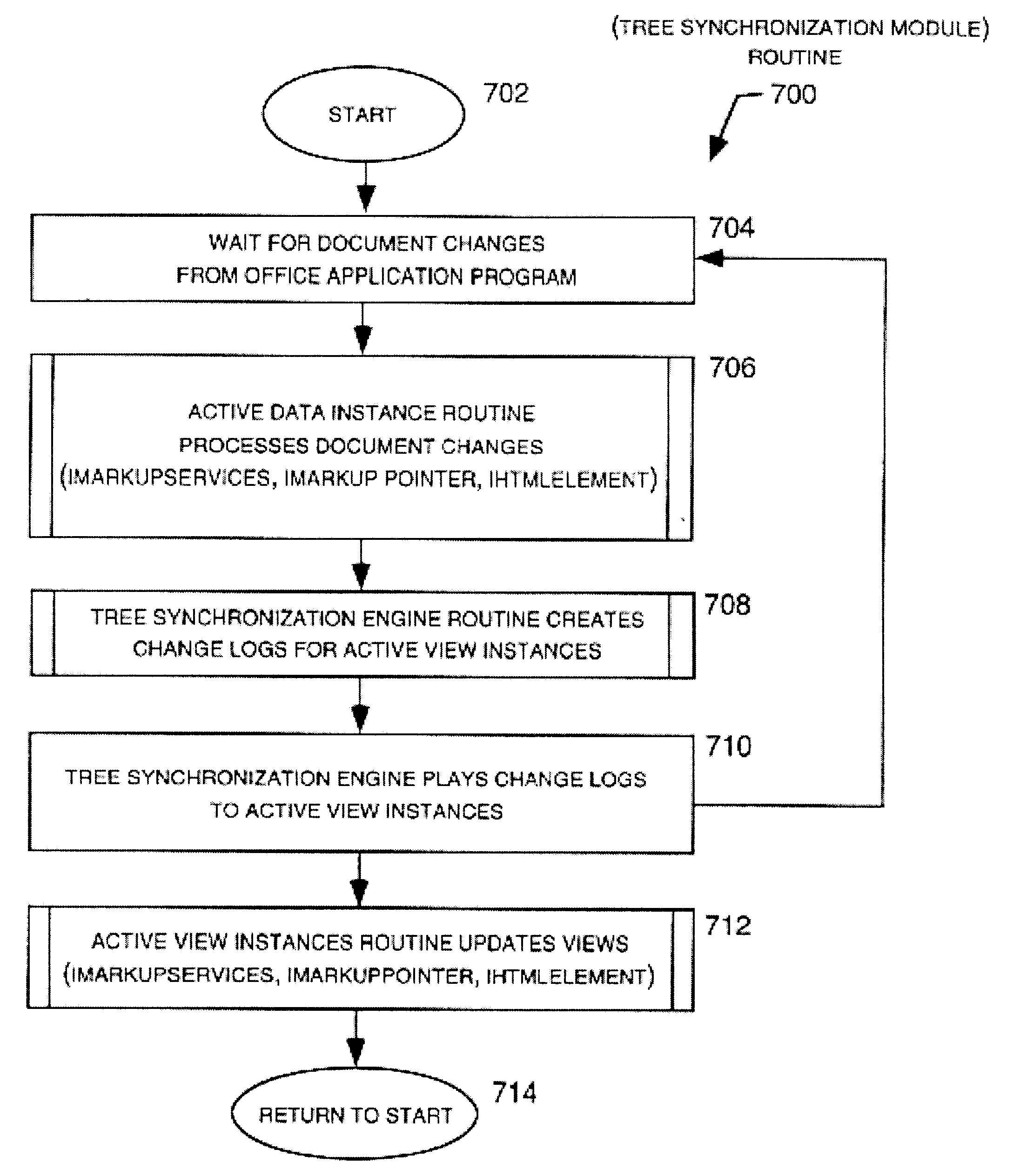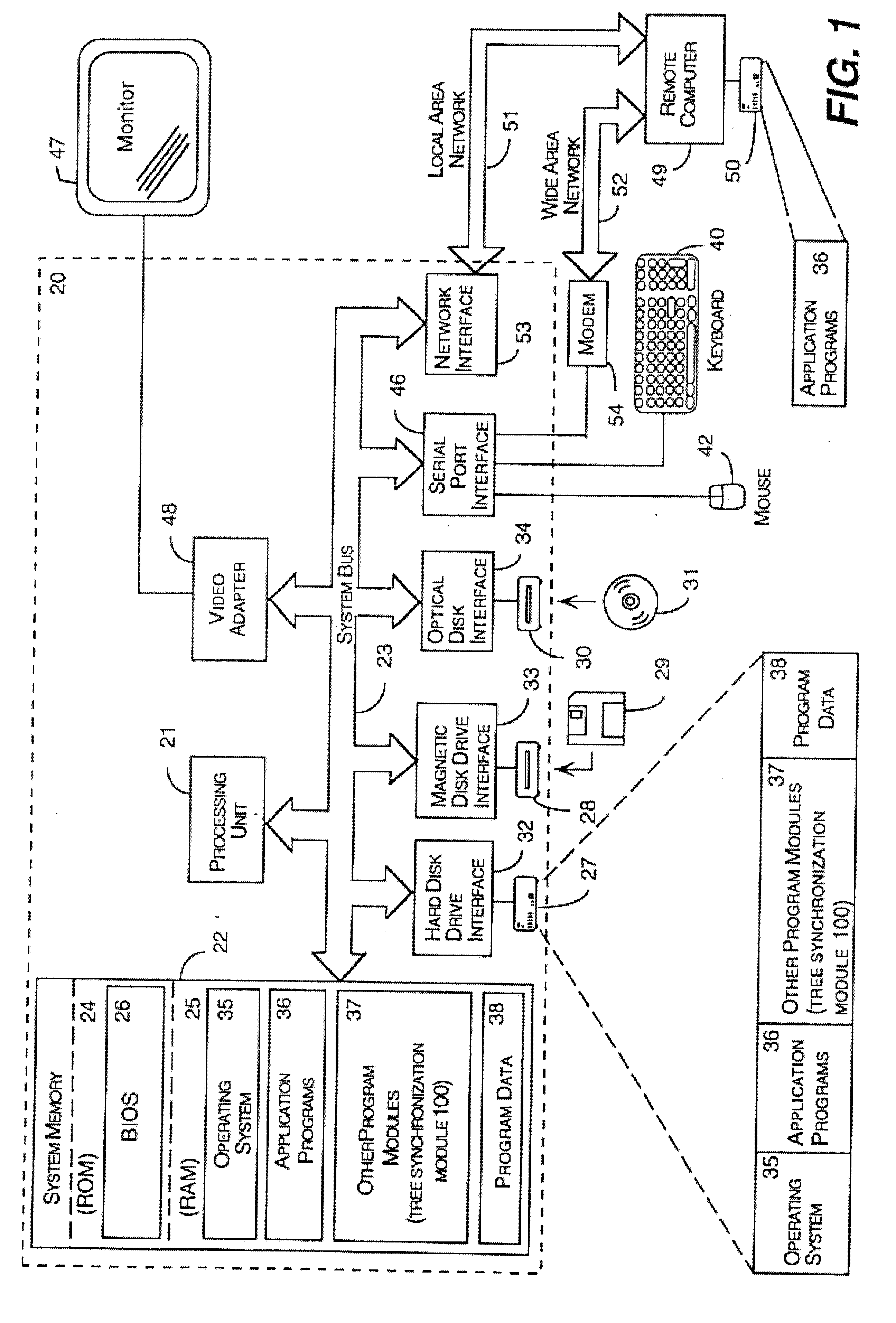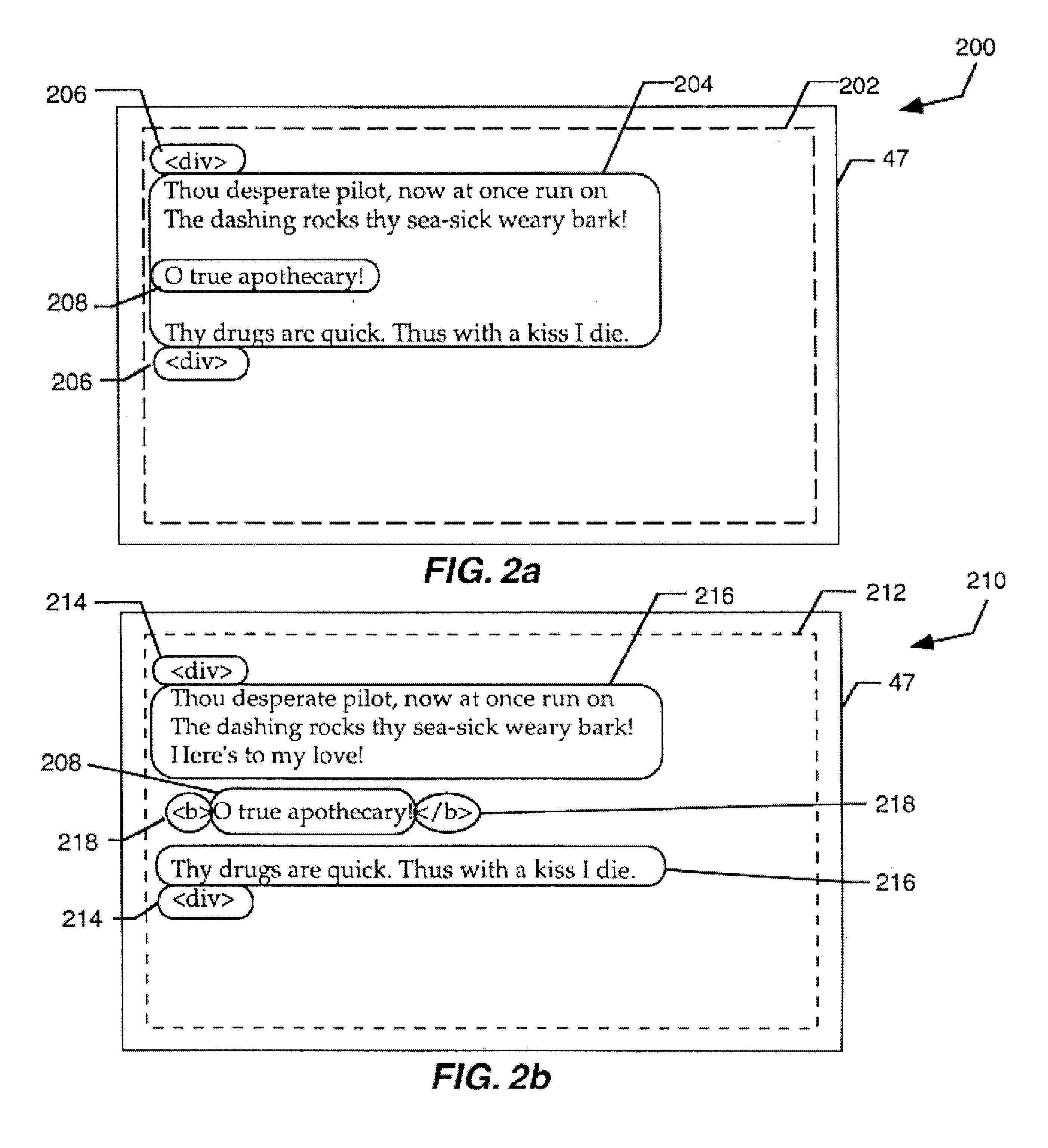HTML/XML tree synchronization
a synchronization and html technology, applied in the field of html/xml tree synchronization, can solve the problems of cumbersome and cumbersome process of managing and synchronizing document chunks and factoids, and the inability to efficiently move changes made to document chunks into the display screen view,
- Summary
- Abstract
- Description
- Claims
- Application Information
AI Technical Summary
Benefits of technology
Problems solved by technology
Method used
Image
Examples
Embodiment Construction
The invention may be embodied in a tree synchronization software module that implements a tree synchronization routine for a document and any number of document views. As an object-oriented program, the tree synchronization module exposes a standard interface that client programs may access to communicate with the tree synchronization module. The object-oriented architecture permits a number of different client programs, such as word processing program, a desktop publishing program, a program for creating Internet viewable documents, application programs, and so forth, to use the tree synchronization module. For example, the tree synchronization module can be used with an application program such as Microsoft OFFICE.
The interface exposed by the tree synchronization module allows the module to receive document changes from the client program. The tree synchronization module then makes changes to the document tree data structure, and synchronizes any view tree data structures with the...
PUM
 Login to View More
Login to View More Abstract
Description
Claims
Application Information
 Login to View More
Login to View More - R&D
- Intellectual Property
- Life Sciences
- Materials
- Tech Scout
- Unparalleled Data Quality
- Higher Quality Content
- 60% Fewer Hallucinations
Browse by: Latest US Patents, China's latest patents, Technical Efficacy Thesaurus, Application Domain, Technology Topic, Popular Technical Reports.
© 2025 PatSnap. All rights reserved.Legal|Privacy policy|Modern Slavery Act Transparency Statement|Sitemap|About US| Contact US: help@patsnap.com



